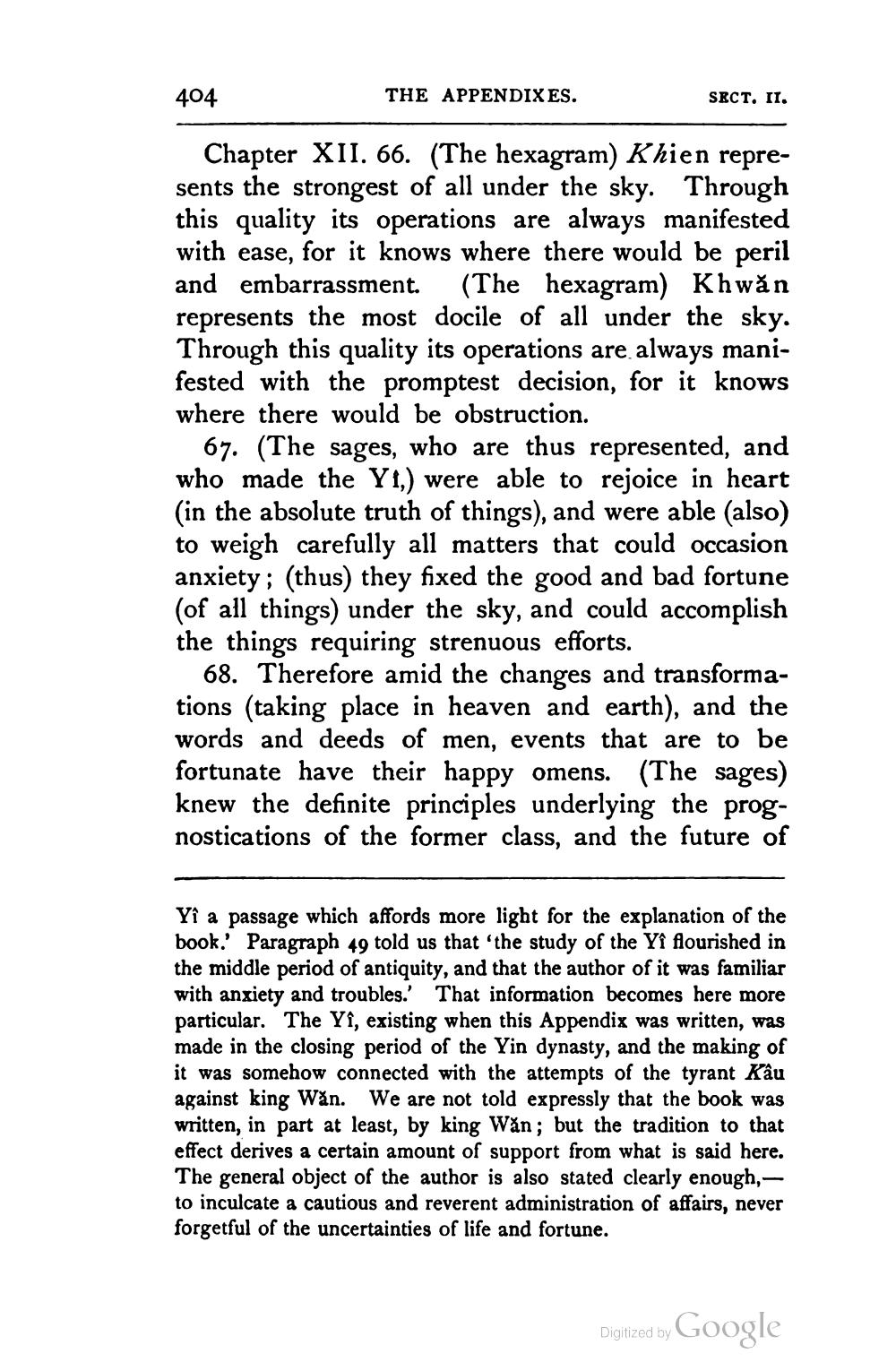________________
404
THE APPENDIXES.
SECT. II.
| Chapter XII. 66. (The hexagram) Khien represents the strongest of all under the sky. Through this quality its operations are always manifested with ease, for it knows where there would be peril and embarrassment. (The hexagram) Khwăn represents the most docile of all under the sky. Through this quality its operations are always manifested with the promptest decision, for it knows where there would be obstruction.
67. (The sages, who are thus represented, and who made the Y1,) were able to rejoice in heart
in the absolute truth of things), and were able (also) to weigh carefully all matters that could occasion anxiety; (thus) they fixed the good and bad fortune (of all things) under the sky, and could accomplish the things requiring strenuous efforts.
68. Therefore amid the changes and transformations (taking place in heaven and earth), and the words and deeds of men, events that are to be fortunate have their happy omens. (The sages) knew the definite principles underlying the prognostications of the former class, and the future of
Yî a passage which affords more light for the explanation of the book.' Paragraph 49 told us that the study of the Yi flourished in the middle period of antiquity, and that the author of it was familiar with anxiety and troubles. That information becomes here more particular. The Yi, existing when this Appendix was written, was made in the closing period of the Yin dynasty, and the making of it was somehow connected with the attempts of the tyrant Kâu against king Wăn. We are not told expressly that the book was written, in part at least, by king Wan; but the tradition to that effect derives a certain amount of support from what is said here. The general object of the author is also stated clearly enough, - to inculcate a cautious and reverent administration of affairs, never forgetful of the uncertainties of life and fortune.
Digitized by Google




